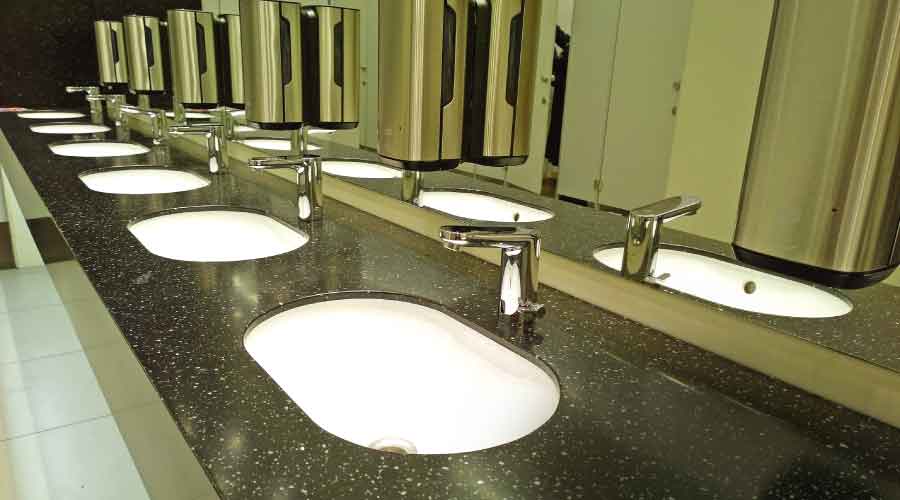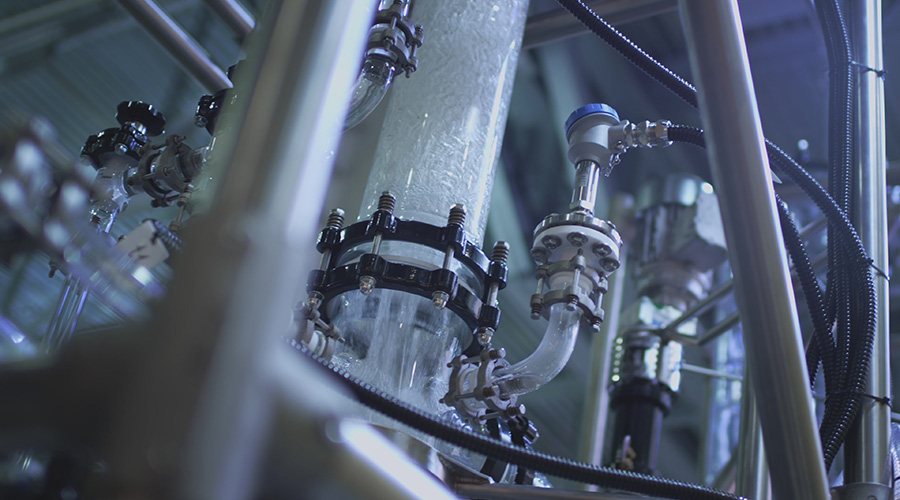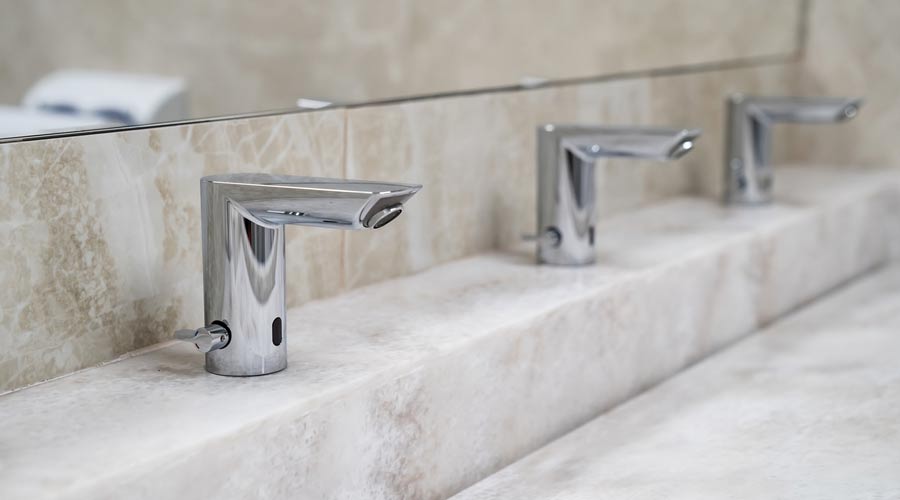Facilities Focus on Hygiene in Restroom Upgrades
Popularity of touchless fixtures soars during COVID-19 pandemic and shows no signs of slowing down
Building occupants are understandably more aware of surfaces they touch than ever before. Manufacturers of restroom products have responded to this heightened sensitivity with a variety of touch-free products, including hand dryers, soap dispensers, faucets and flushometers. Among the technological improvements is the ability to remotely monitor restroom use and cleanliness, a bonus for maintenance and engineering managers whose departments might be short-staffed.
Touchless restroom systems incorporate advanced sensing technology to dispense a pre-set amount of product when a user waves his or her hand underneath it. Reducing the number of user touchpoints helps improve hygiene and reduces the risk of cross-contamination. Hands-free dispensers for soap, hand sanitizer and paper towels are designed to deliver a number of user and maintenance benefits, including hygiene, labor productivity, cost savings and sustainability.
Touchless fixtures are one of the most visible signs of a hygienic environment. In hygiene- and sustainability-focused settings, upgrading to high-performing flush valves and handwashing systems with touchless sensor activation can be an effective way to cut restroom costs. Managers in institutional and commercial facilities have shown that it is possible to upgrade some handle-operated flush valves to a touchless experience in just a few minutes with a retrofit kit.
Touchless soap dispensers and hand dryers also can improve the daily work life of maintenance technicians. Free-standing pump dispensers eliminate the need to wipe down messy, soap-coated countertops found in bathrooms. Hand dryers help reduce mess and waste by eliminating the need for custodial workers to restock paper towels and pick them up off the floor. Touchless hand dryers can also help managers avoid the cost of restocking paper towels.
Pandemic accelerates process
Clean restrooms have always been a priority for managers, regardless of whether a health crisis is taking place. Then the COVID-19 pandemic set in, and emphasis increased.
“COVID-19 forced everyone that interacts with a building to focus on hygiene,” says Ray Schaffart, vertical marketing manager-commercial for Zurn Water Solutions Corp. “Whether it’s a school, restaurant, commercial office, hospital or airport, hygiene had to become a critical area of attention in order to regain trust from the people who use the space, as well as those employed within it.”
COVID also increased the importance of filtered air. HEPA-filtered touchless hand dryers clean the air before it reaches users’ hands and ensure hands are dry to reduce the risk of transmitting germs.
Touchless fixtures have gained traction in restrooms for a variety of reasons.
“In just a few years, touchless technology has gone from ‘nice to have’ to ‘must have,’” says Will Haas, senior product manager for Bradley Corp.
In the wake of the pandemic, consumer demand is high for touch-free restrooms. A Bradley survey on handwashing shows that 84 percent of Americans believe it is important for public restrooms to be equipped with touchless fixtures.
“Not only are touch-free fixtures inherently more hygienic and convenient because of their hands-free operation. They also enhance operational efficiency,” Haas says. “Over-stretched maintenance staffs are on the lookout for restroom products, technologies and features that optimize maintenance, cut costs and make their jobs easier.”
Touch-free restroom products with maintenance indicators, Internet of Things (IoT) connectivity and A/C power as opposed to batteries can improve and simplify maintenance.
Fortunately, sensor technology has significantly improved, making it easier to clean, maintain and service. While some older, touchless models include sensors that deliver spotty soap and water activations, “today’s designs incorporate advanced sensing technology that ensures continuous and reliable washing, as well as less-messy soap splotches left in and around the basin,” Haas says.
Touchless dispensing has been growing in the market for more than 20 years, according to Julie Howard, vice president and general manager of Georgia Pacific’s GP PRO Towel, Skin Care and Air Care categories.
“The pandemic accelerated that growth and will be the turning point for making touchless the new normal in away-from-home facilities,” she says. “Together with the labor shortage impacting facility operations, I think we’ll see increased demand for more innovation in the areas of unit capacity, ease of use and training.”
Howard Riell is a freelance writer based in Henderson, Nevada.
Related Topics:













